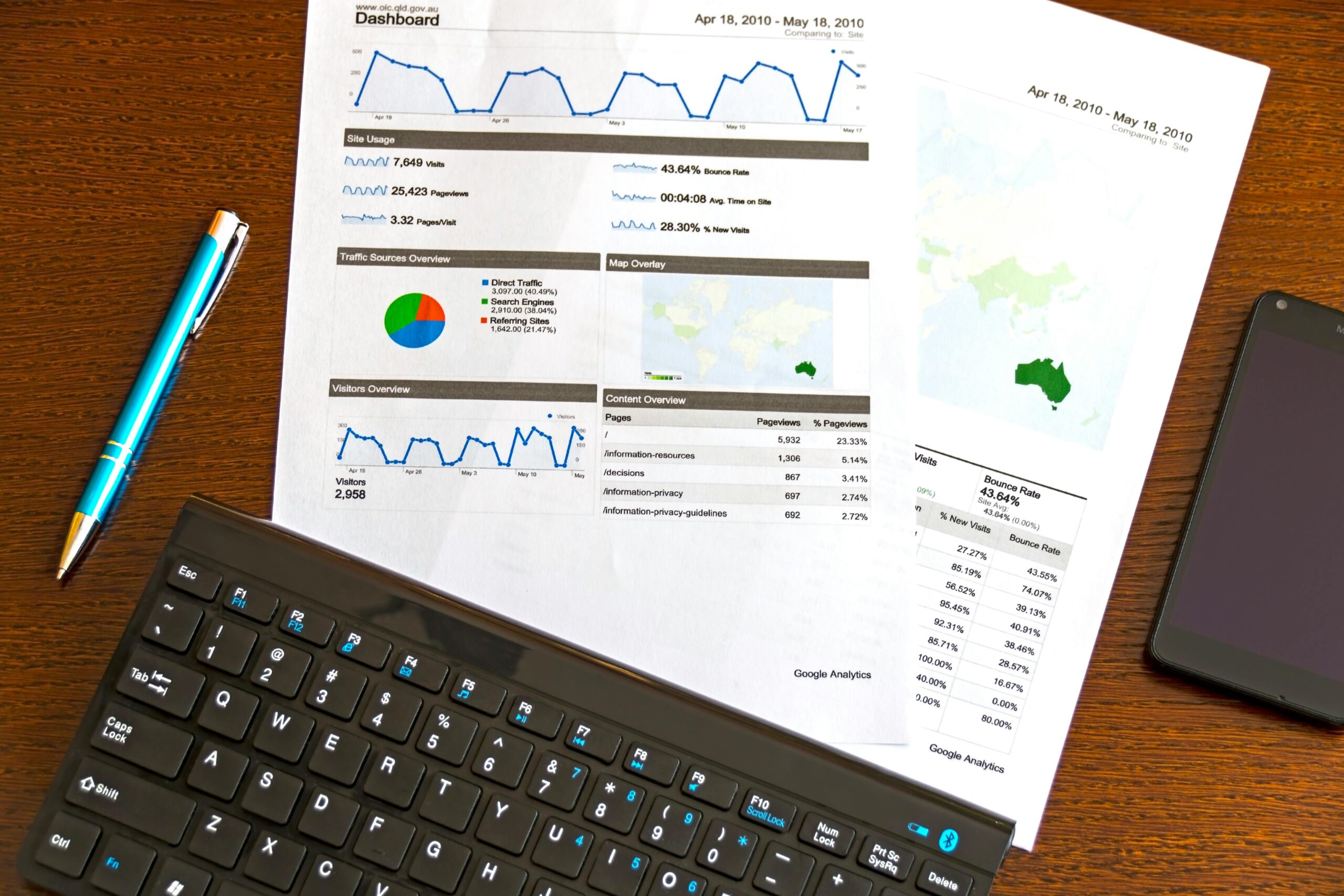Research | Analytics
I. Obstacles that Retail (physical, online) Businesses Face
In order to evaluate business operations including supply chain, human resources, and financial performance from the viewpoints of consumers and enterprises, retail analytics consultants are helping retail organizations expand.
1) A stronger focus on predictive analytics
In a data-driven world, the need for precise projections and efficient business procedures is becoming more and more significant. Most manufacturers have created applications to combine statistics, forecasting algorithms and predictive analytics models into analytics apps, reports, and dashboards. But applying business analytics for retail is not so simple.
A reputable retail domain consultant’s SOP for this procedure might streamline it. In the retail industry, predictive analytics also facilitates customer interaction and backend activity management, including tracking, CRM, data analytics, warehouse logistics, and mobile support.
Predictive analysis has increased in the retail analytics market due to the growth of Big Data and IoT. Solutions for retail analytics make it possible to analyze a variety of shop operations, track store performance, enhance category management, and boost the effectiveness of marketing campaigns, sales management, budgeting, and operations.
Retail businesses must concentrate on store operations in order to obtain comprehensive reports quickly and make decisions that are actionable based on labor planning, store profitability, category management, sales, margins, inventory, and store performance management.
Before e-commerce and m-commerce ever existed, retail was one of the first venues for customers and sellers to communicate. To get the job done, the retail sector has depended on excellent product displays, competitive pricing, and skilled salespeople. The retail sector must change as a result of the advancement of technology and the numerous new opportunities for growth acceleration. SOPs and retail analytics training can help close the gap.
2) Lack of Domain Expertise and Knowledge
Lack of topic expertise on the part of the analytics development team during product development is another significant obstacle. When domain knowledge is lacking, product modifications or enhancements are not proposed. As a result, training in the retail domain or having a team of experts in the retail domain work on analytics will improve results and shorten development turnaround times.
3) Problems in the Development of New Products
Given that IT professionals are programmers first and developers second, creating new products continues to be the most difficult task. Gaps between the technical team and the client’s needs may arise from a lack of commercial expertise.
4) Incapacity to Recognise Customer Needs
Lack of 360-degree understanding in producing items meeting the client’s expectations is another challenge. At best, there is a shaky grasp of applied statistics in management. Internal IT teams or vendors with a limited grasp of analytics beyond business intelligence are used to commission pilots. Some analytics providers are unable to close the gap between their expertise in analytics and the professionals who are skilled at navigating retail obstacles.
Retailers who follow the old school of management are unable to adjust to analytics and have faith in it to the extent that it provides valuable but unreliable data that is directed by teams and vendors who have insufficient knowledge of either applied analytics or the retail industry, or both. Retailers are adopting me-too tactics and becoming late adopters of analytics, ignoring the enormous potential of analytics and failing to recognize its full potential.
2. Working with Retail Domain Consultant TRS has several advantages.
TRS’s retail business analysts have been developing predictive analytics for a variety of retail customers. They act as a liaison between the technical team and their client’s needs. TRS Consulting additionally delivers a market research viewpoint and retail operational aspect to clients. With this outstanding retail consultant at your disposal, it is now simple to conduct in-depth analyses on a variety of supply chain, customer relationship, sales, and management topics in accordance with customer needs.
By giving teams the right input and creating executable products, this facilitates the efficient construction of strategies for analytics firms and their implementation. Utilizing TRS’s product development specialists for any kind of retail product upgrade adds value to client deliverables.
a) Cost:
Now, employ data science and machine learning to determine retail goods prices using predictive analytics for a variety of product lines and categories. Real-time sales data and price optimization at specific times can be obtained with the use of a predictive pricing model.
b) Engines for recommendations:
Predictive analytics can also be applied to e-commerce to provide clients with important recommendations based on their previous purchases or social media activity. Online sales teams can provide recommendations based on real-time data. For brick and mortar stores, this kind of suggestion strategy can also be applied to in-store interactions.
C) Inventory Control:
Sales losses as a result of poor inventory management give the false impression that demand for particular commodities is declining. Predictions of future orders based on historical data are therefore erroneous. Real-time data allows astute retailers to relocate merchandise where it is required before it is too late. Along with information on regional variations in weather, tastes, etc., predictive analytics can also be utilized to determine the warehouse location and how to stock products.
d) Astute Revenue Prediction:
Predictive analytics enables precise estimates based on anticipated purchasing patterns of new clients rather than estimating income from shoppers looking for historical data.
3. Concerning Retail Analytics
Rapid social media usage, greater digital interaction, and the availability of large amounts of data are the main factors propelling the retail sector. AI, augmented reality, and beacon technology are examples of recent technological developments that complement the utilization of data platforms for the best possible data collection. The information is entered into a comprehensive analytics system that offers a number of matrices for boosting sales, raising the stock turnover ratio, cutting expenses, and boosting ROI and promotions.
Retail analytics are now a necessary component for businesses looking to grow. It is not a good idea to ignore analytics since it offers insightful information linked to quantitative data. Businesses can use retail analytics to improve their business models, create solutions for their customers, and enter new markets.
Customers are now the main forces behind industrial expansion and transformation, particularly in the retail sector. Moreover, decision-making has grown more difficult. There will always be difficult and troubling choices, regardless of time or technological developments. This covers how to keep important customers, how to price goods to make the most money, which clients should be the focus of the next campaign, and how much inventory is needed to target the best customers.
A retail business model benefits greatly from analytics, even though data, machine learning, and statistics are necessary for making the best business judgments. According to a PwC poll, nearly 90% of participants relied on analytics to improve their business chances. Social media, mobile, and cloud-based PoS technologies have all contributed to an exponential increase in the amount of data that retail firms generate and keep. As sophisticated, statistical AI systems find hidden patterns and forecast future events, the range of insights available to retailers is growing.
Retail companies are using big data to transform their decision-making process, but doing so calls for a specific SOP on data insights in order to make strategic and well-informed choices. Skilled retail consultants and data analysts are needed to use specialized analyses, tools, and techniques. Analytics in the retail domain can have a significant impact. Ecommerce firms are pursuing analytics because of the clear advantages of these analytical solutions with regard to pricing and supply chain.
For physical businesses, the emphasis is on customer engagement analytics, store size optimization, and store location selection. Online business analytics for increasing customer loyalty and creating client solutions that are of the highest value are also included in ecommerce analytics. The retail analytics market is expected to grow at a compound annual growth rate (CAGR) of 18.26 percent from 2018 to 2023, reaching a value of USD 10.34 billion. From distinct tastes to basic needs, retail analytics can forecast a broad spectrum of customer preferences.
Retail businesses, particularly CPG brands, are depending more and more on business intelligence (BI) and retail analytics technologies like Tableau and Microsoft Power BI. SOPs are necessary for the efficient implementation of analytics in the retail and e-commerce sectors, as well as merchant category analytics, in domains including customer intelligence, operational intelligence, and merchandising intelligence.





